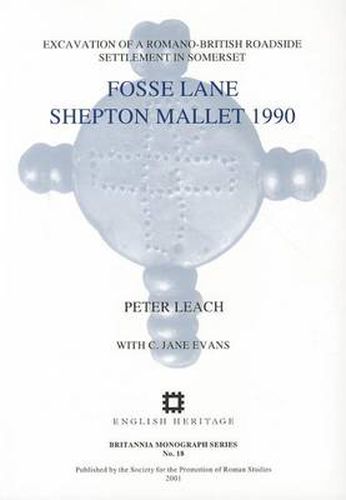Readings Newsletter
Become a Readings Member to make your shopping experience even easier.
Sign in or sign up for free!
You’re not far away from qualifying for FREE standard shipping within Australia
You’ve qualified for FREE standard shipping within Australia
The cart is loading…






In the summer of 1990 rescue excavations by the University of Birmingham, funded jointly by Showerings Ltd and English Heritage, revealed over 2 ha. of a Romano-British roadside settlement beside the Fosse Way in Somerset. Located on the outskirts of Shepton Mallet, little more than a postulated settlement locality and a nearby pottery manufacturing site were known previously. As a result of the information presented in this volume, and subsequent research and discoveries, Fosse Lane can now take its place among the better known of the smaller towns and roadside settlements of Roman Britain. The excavations revealed evidence for a typical, local, agricultural and minor industrial centre, developing from the end of the 1st century AD and with its floruit in the 4th. The scale of excavation was sufficient to reveal streets, plot layouts, plans of both timber-frame and stone buildings, and several small cemeteries. Appearing in the last phase of settlement, the latter indicate some continuity of use into the 6th century, and the possibility of one Christian burial group.
$9.00 standard shipping within Australia
FREE standard shipping within Australia for orders over $100.00
Express & International shipping calculated at checkout
In the summer of 1990 rescue excavations by the University of Birmingham, funded jointly by Showerings Ltd and English Heritage, revealed over 2 ha. of a Romano-British roadside settlement beside the Fosse Way in Somerset. Located on the outskirts of Shepton Mallet, little more than a postulated settlement locality and a nearby pottery manufacturing site were known previously. As a result of the information presented in this volume, and subsequent research and discoveries, Fosse Lane can now take its place among the better known of the smaller towns and roadside settlements of Roman Britain. The excavations revealed evidence for a typical, local, agricultural and minor industrial centre, developing from the end of the 1st century AD and with its floruit in the 4th. The scale of excavation was sufficient to reveal streets, plot layouts, plans of both timber-frame and stone buildings, and several small cemeteries. Appearing in the last phase of settlement, the latter indicate some continuity of use into the 6th century, and the possibility of one Christian burial group.